A Trip to the Moon and The Great Train Robbery

Film, “A Trip to the Moon”
Director, Marie-Georges-Jean Méliès
Release Date, 1902
Country, France
Language, Silent Film
Genre, Science Fiction
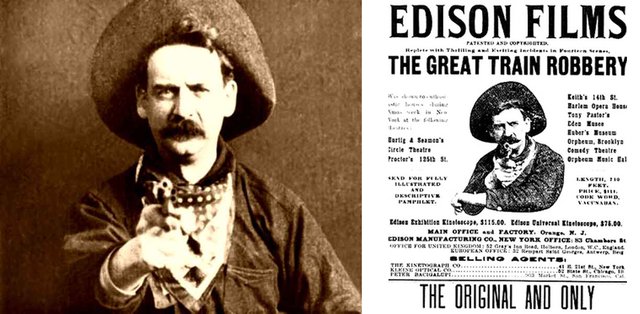
Film, “The Great Train Robbery”
Director, Edwin S. Porter
Release Date, 1903
Country, United States
Language, Silent Film
Genre, Western
“The World is in your hands...”
George Melies
George Melies describes the movie with the following phrases “The World is in your hands.” The first person to find cinematography is not George Melies, but we can say that he was the man who discovered the cinema.
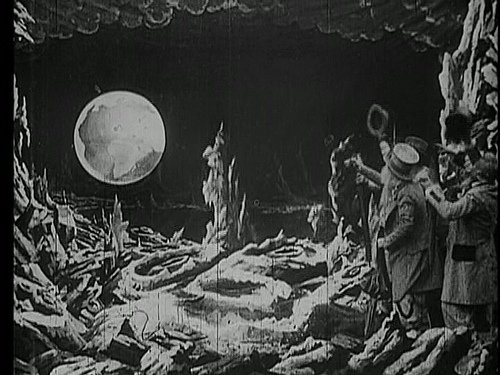
George Melies's best-known film is 'A trip to the Moon'. The film was shot in 1902. However, he wrote this script inspired by Jules Verne's novel. A trip to the Moon has many firsts, both story and technically. As the first science fiction film, the first effects experiments were made in this film. There are small fiction tricks like smoke effects, lost guys. These are also due to his illusionist background.
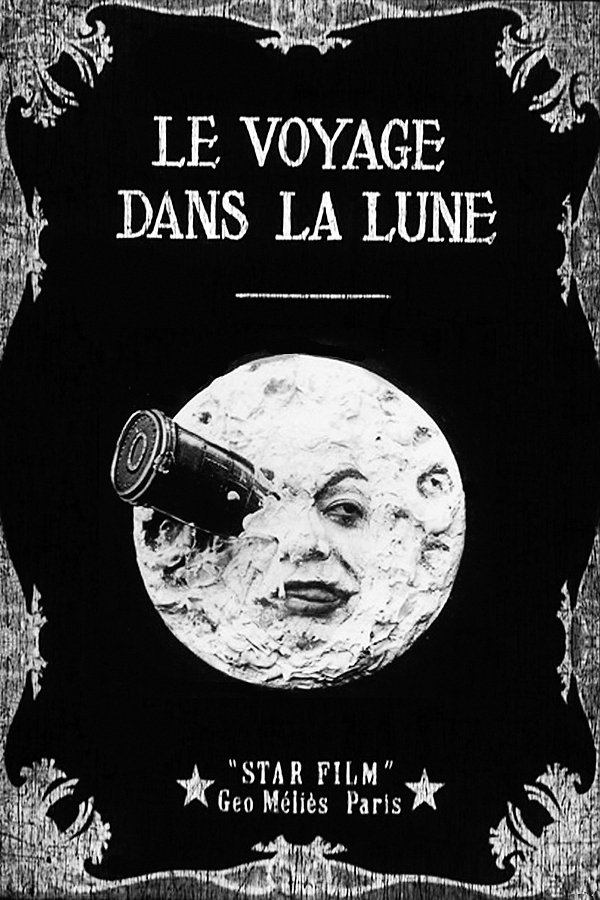
A Trip to the Moon was the first narrative film. In addition, the film was described in the cause-effect relationship. Introduction, Melies tells the story of a group of scientists who want to travel to the Moon. Body, they made a space shuttle and went to Moon, there have been a lot of incidents and result, they went back to Earth.
As the space shuttle moves towards the Moon, we see the Moon with an angle that is actually due to technical inability. Next time we will say 'subjective camera angle'.
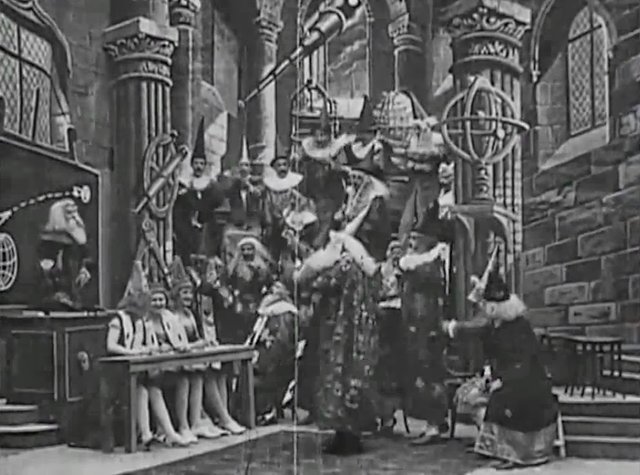
The moon's face is one of the most symbolic icons of cinema history. Today, still in music clips, commercials this symbol is often encountered in movies.
It is one of the most important features of cinema, to be permanent. If, after 100 years, your works are still being spoken, 'you've done it!' means.
A Trip to the Moon was shot during the film with a stationary camera angle. In almost all scenes, the camera is fixed. The players play in front of the camera and leave the front of the camera when their roles are over. Melies's movies have a theatrical language.
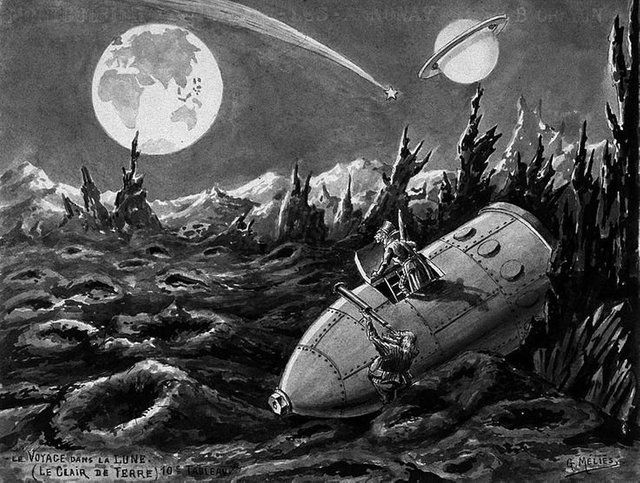
The film was shot in the studio. The director has caught many advantages by shooting this film in the studio. Because he couldn't know use to camera, but he could use the space, decor and customes. Melies did the hard one and played with the decors.
Some sources said that 'Melies is drawing the first storyboard when they shoot this movie'.
The First Western Movie
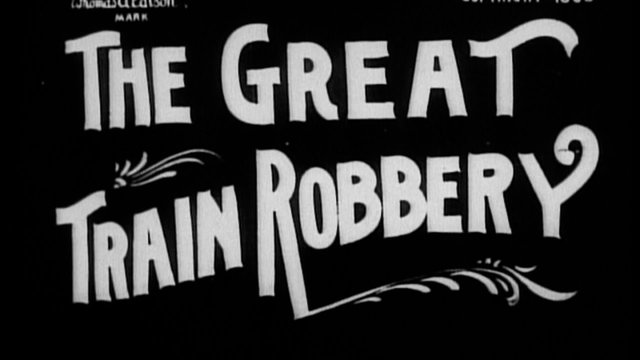
The Great Train Robbery is considered the first western movie. Western films have been made before this film. But the first western film to have a story is The Great Train Robbery. The total duration of the movie is 12 minutes.
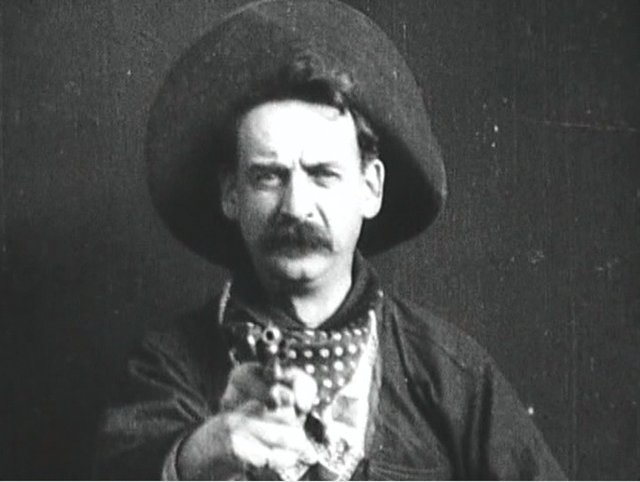
The film was shot with a theatrical mentality until the eighth stage. In each scene, only the decor changes and the camera captures events fixed. The film has usually shot with single-plan. Only the fourth scene has two plans. The guy that the thief fights with is replaced by a model that can be easily thrown from the train.
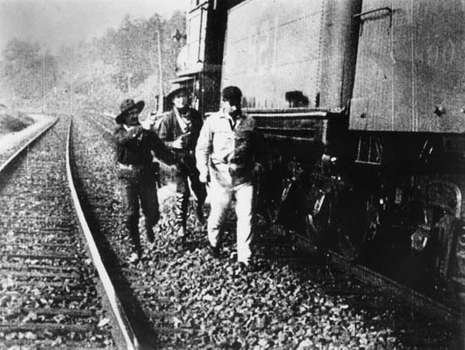
Porter, by then applying a technique that has never been applied, makes the camera pan right and left towards the end of the eighth scene. After that, it is not a theatre anymore but a cinema film. This film is therefore important. There is a scene in this film that will be remembered until today. At the end of the film, the main character shoots the right gun at the audience. Think of a spectator who went to the cinema for the first time 100 years ago! A big guy shoots himself with a gun! What could have done!
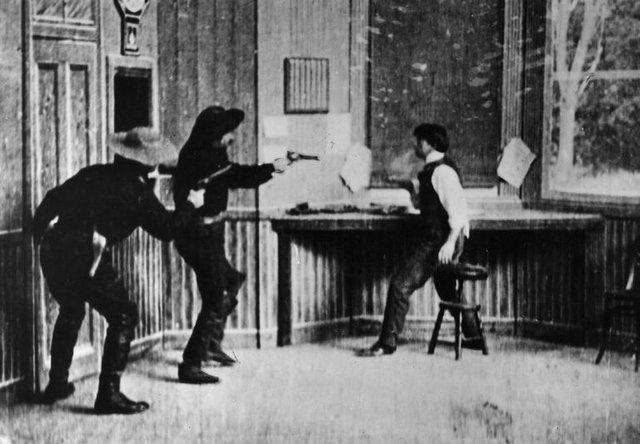
In conclusion, along with that, as examples of early cinema, I found both The Great Train Robbery and A Trip to the Moon to be quite advanced for the time they were made. In my opinion, A Trip to the Moon is a more effective and innovative film than The Great Train Robbery. Because of the cinema language used and new cinema techniques discovered, smoke effects, cut editing, cinema has brought a new perspective. But ‘The Great Train Robbery’ is more evident than the acting characteristically ‘A Trip to the Moon’. A Trip to the Moon is also acting, behind the story. If you change the acting position, nobody will understand. In both films, the general angle is usually used. Neither close angle nor a different angle technique has not used.
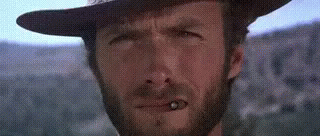
Two films, the genres are very different from each other. Let's give an example to better understand this. For example, think of Star Wars Films with Good, Bad, Ugly. Two separate stories, two separate genres. Both are world-famous films in their respective fields. Whichever you like, it's better! I do not see much difference between them as technical and storytelling!
Finally, we must respect these two films. because if today's cinema is these days, these two films come to us from an innovative point of view.
I didn't wtch this movie even I heard first time..
Posted using Partiko Android
Yeah, you should watch both. ;)
Hello @outofstandarts! This is a friendly reminder that you have 3000 Partiko Points unclaimed in your Partiko account!
Partiko is a fast and beautiful mobile app for Steem, and it’s the most popular Steem mobile app out there! Download Partiko using the link below and login using SteemConnect to claim your 3000 Partiko points! You can easily convert them into Steem token!
https://partiko.app/referral/partiko
Congratulations @outofstandarts! You received a personal award!
You can view your badges on your Steem Board and compare to others on the Steem Ranking
Do not miss the last post from @steemitboard:
Vote for @Steemitboard as a witness to get one more award and increased upvotes!